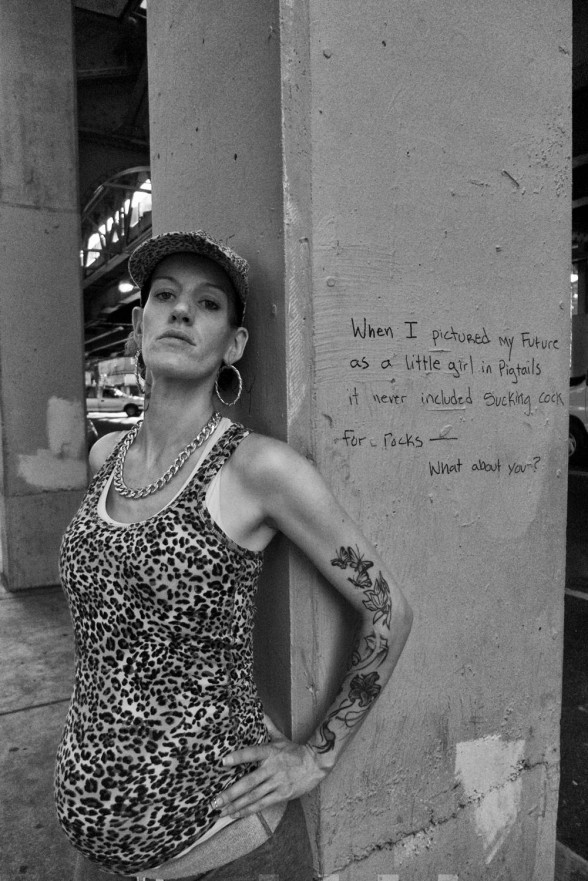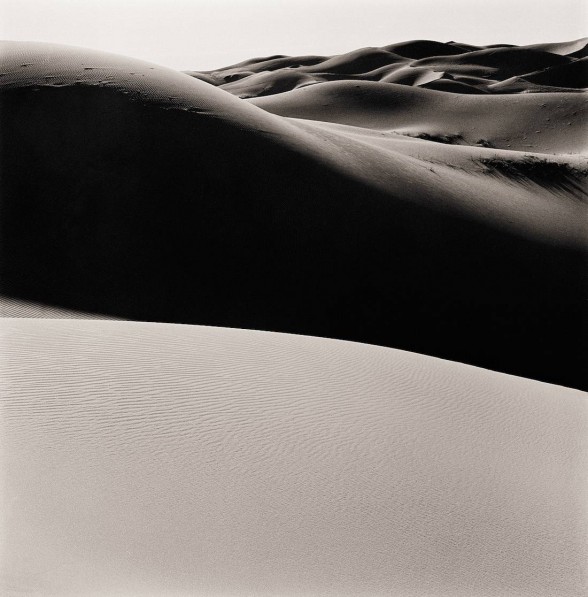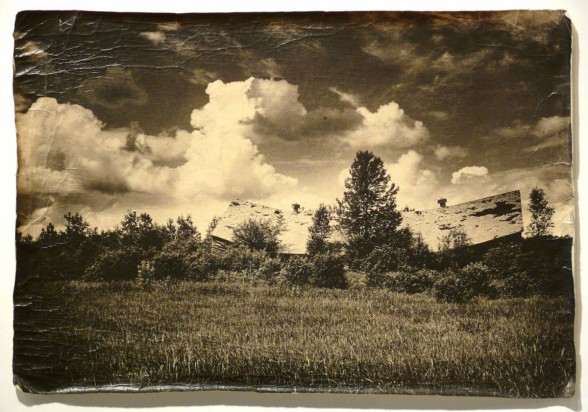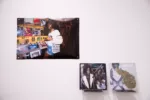The Light Room’s 5th Annual Summer Photography Exhibition demonstrates the daunting curatorial challenge of presenting a coherent exhibition of the work of eight photographers working without an organizing theme. I do not think that the members of the Light Room and the 3rd Street Gallery have accomplished that, but there are some wonderful pieces here, and obviously a group of talented and skillful photographers.
Perhaps due to the immediacy of the medium, sometimes you can be taken off guard by a photographic image, captured by its perspective, by its treatment of light or its subject matter, or by the story that it tells or suggests. Many of the photographs in this exhibition provide such an experience, and the work of three of the eight Light Room photographers stands out.
Street photography in Philadelphia

“When I Pictured”
2014
15” x 11”
Archival Inkjet Print
Courtesy of the Artist
Ronald A. Corbin is a Philadelphia street photographer. His Kensington Project and his Center City Series, both of which are represented in this exhibition, are reminiscent of Jeffrey Stockbridge’s Kensington Blues and Zoe Strauss’s I-95 Project. Corbin though often works closer up than either Stockbridge or Strauss, and in black & white, creating a rare intimacy in his photographs.
Corbin has walked our city streets and, shooting with film in natural light, documented the lives of the dispossessed in brilliant and mournful portraits. His pieces capture the humanity of his subjects and starkly remind us, as Emile Durkheim theorized, that our social organization is accomplished and fortified, at least in part, by drawing lines between deviance and normality. Whether featuring the disabled or the homeless, the cowed or the defiant, we get a glimpse through Corbin’s work of the line that separates THEM from US, and perhaps sacrifices THEM for US, and the work suggests that too often we are talking about THEM when we should be talking about US.
In Corbin’s “When I Pictured,” seen above, a young, bejeweled & tattooed woman wearing a leopard dress and cap, perhaps a working woman, perhaps a drug addict, perhaps neither, leans against a wall in Kensington, and the graffiti on the wall, which she did not inscribe, but might have, reads: “When I pictured my future as a little girl in pigtails it never included sucking cock for rocks – What about you?” What about you?
Searching for universal rhythms in landscape

“Algodones Dunes, California”
2001
10” x 10”
Carbon Pigment Print
Courtesy of the Artist
Accomplished Bucks County photographer and teacher, Richard Boutwell, apprenticed with the remarkable Philadelphia photographers Michael A. Smith and Paula Chamlee. The series he has selected for this exhibition are landscapes from the American West and titled Go West – Looking Back, Looking In. What they really are, however, as Boutwell explains, are meditations upon the search for what Edward Weston termed “universal rhythms.” Reproduced below is one of his carbon digital prints of the Algodones Dunes in Southern California. The shifting shapes and shadows of the dunes of course are archetypal, and reminiscent of our own forms. Boutwell not only records their majesty and grace, he entices us to fathom both their enormity and fleetingness, and through them our own place in the universe.
An ode to the passing of time

“Castle Hill Road, Washburn”
2008/2011
14.5” x 20”
Hand coated Silver Gelatin Print on Gampi Paper
Courtesy of the Artist
Al Wachlin, Jr. is the coordinator of the Light Room. The series of his photographs included in the exhibition is titled Potato Houses of Aroostook County, and highlights old potato barns of Northern Maine which are displayed next to their sleek contemporary counterparts. The old barns fittingly are shot with film and presented in black & white on handmade and hand-coated paper, while the new ones are printed digitally with pristine color on specially coated metal. The contrast whips the viewer through time and tells the frightening tale of what has become of the small family farms that once dominated the region. In Wachlin’s B&W photograph Castle Hill Road, Washburn, pictured here, a magnificent, but now bowed and dilapidated old potato house gradually is being absorbed into the abundant landscape. The composition of this photograph is extraordinary: notice the rich dark sky, the dramatic backlit white clouds and the subdued oval of sunlit vegetation in the foreground. The photograph gloriously suggests the passage of time.
A show for photo buffs as well as those who just love great imagery
The work of five other Light House members is represented in the exhibition:
Mary Ann Broderick-Pakenham, G. A. Carafelli, Carlos Chan, Annarita Gentile and Josh Marowitz. The platinum / palladium prints, gelatin silver fiber prints, and hand-painted salt photographs of Carafelli, Chan and Marowitz respectively present a fascinating tutorial about these rare techniques of photography and printing. Gentile exhibits strikingly vivid color digital photographs of Chinese New Year celebrations and the Cherry Blossom Festival, both in Philadelphia. Finally there are Ms. Broderick-Pakenham’s large portraits of dogs, which are printed in color on canvas. In what I experienced as a slightly bizarre touch, some of the dogs are presented wearing fashion accessories — one with a bow tie, one with a necklace. You will either love or hate this series, but in any event the effect is jarring and I thought distracted from the far more subtle and restrained work of the other photographers (perhaps with the exception of Ms. Gentile).
There is great technical virtuosity in this exhibition, together with many images that are emotional, thought provoking or contemplative, and more than enough to overcome what I perceived to be a lack of overall curatorial coherence. For those of us who are not connoisseurs of photography it is a compelling and informative exhibition, well worth experiencing.
The Light Room, 5th Annual Summer Photography Exhibition, 3rd Street Gallery (on 2nd Street), Through August 30th, with a closing reception 2-5PM that day.








